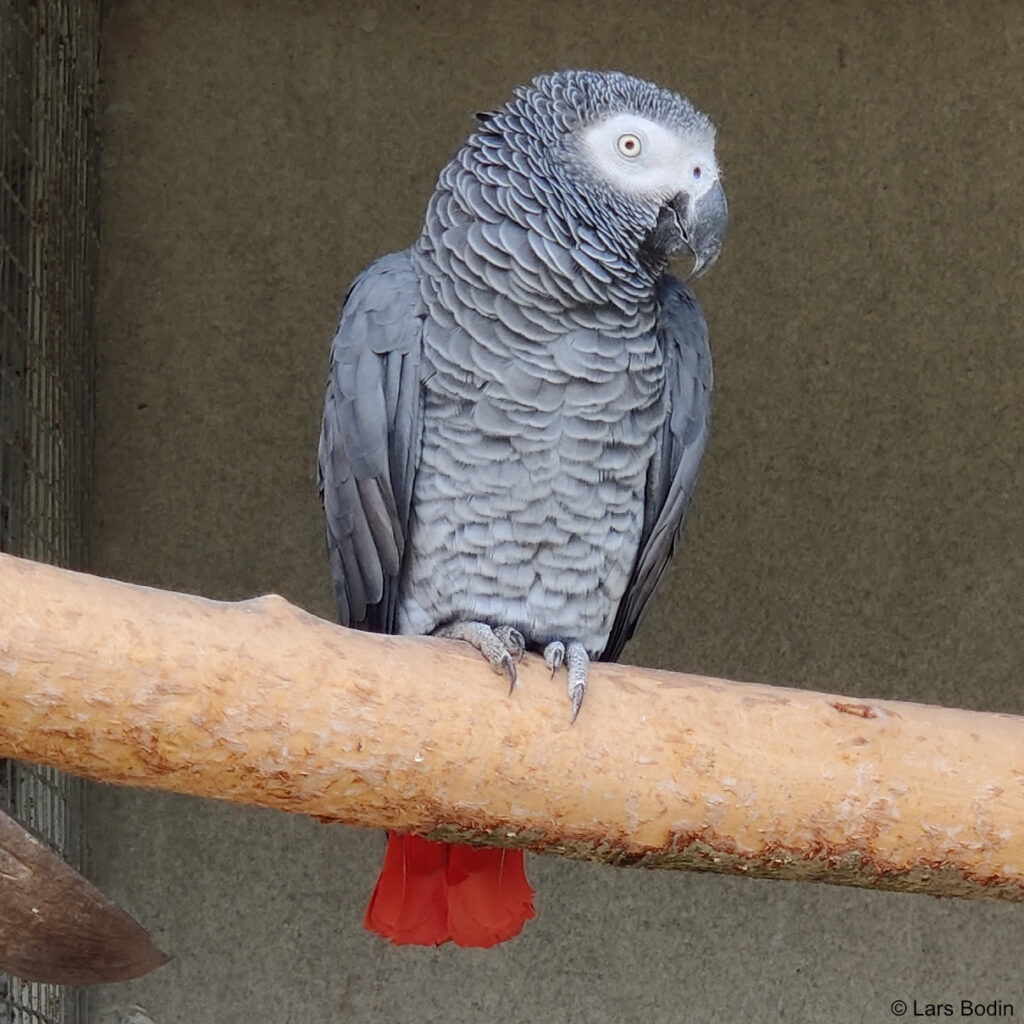Psittacus erithacus - Grey Parrot
The Grey Parrot – Psittacus erithacus (Linnaeus, 1758) – is a medium sized African parrot with an overall grey plumage. It is also known in aviculture as also called African Grey Parrot or just African Grey.
Despite the colors being a little boring it is still a very popular pet parrot as it is a very good “talker”. It is highly intelligent and one of the most talented parrots when it comes to mimic sounds, words and short sentences.
When kept as a single pet parrot a Grey Parrot often connects to the owner and is and reserved to all others. If they do not get enough attention, it can result in mental problems such as feather picking. If you get an offer to buy a “used” bird make sure to check thoroughly if the bird seems to be OK or maybe have physical or mental problems due to neglect or improper care.
Imported birds are often shy and it requires a good deal of patience to make them tame. I recommend buying from a local breeder where you can check out the surroundings where it was born and raised and verify that all the birds seem to be in good health.
According to the IUCN Red List the Grey Parrot is Endangered because of ongoing habitat loss and capture of wild birds for international trade.
Notice: The Grey Parrot is listed on CITES Appendix I and EU Annex A!
Description
Grey plumage. The feathers on the head and nape have a white/light-grey edge resulting in a scaly pattern. The gump is light grey, the primary feathers dark grey. The beak is black. The tail is red.
The male is usually slightly larger than the female, otherwise no visible gender difference.
Adult birds have pale yellow irises; juveniles have dark gray iris.
Size: approx. 38 – 45 cm.
Weight: approx. 400 – 650 grams
In captivity the lifespan is about 50 years with good care.
Subspecies
None.
Habitat
Africa – Ivory Coast to Kenya, Tanzania, Príncipe Island, São Tomé and Bioko.
Diet
I recommend using ZuPreem pellets as the main part of the diet – about 60-75% of the diet. These pellets contain all the important minerals and vitamins the birds need and at the same time have a low fat content. Supplement with vegetables, fruit and a small amount of nuts and seeds. Peas in pods can be recommended as it is both healthy and a fun pastime when the birds have to get the peas out of the pods.
Suggested nuts and seeds: Sunflower, corn, oats, wheat, millet, pistachios, hazelnuts, walnuts, pecans and Brazil nuts.
Avoid peanuts as there is a high risk of them being infected with fungus!
Sprouted seeds are highly recommended especially during the breeding season.
Aviculture
As a pet parrot the Grey Parrot must be kept in a cage of at least 70×70 cm in the base area and 1 meter in height. It is also recommended to have a parrot stand with climbing facilities.
Several birds can be successfully held in a large aviary. Birds kept in an aviary can also become tame and confidential.
After acclimatization the birds are not sensitive to low temperatures and can withstand short periods of light frost.
The Grey Parrot has been successfully breed several times. However it may be difficult to find sympathetic couples.
The next box should be approx. 60 cm high and with an entrance hole of approx. 10 cm. The bottom should be 25 x 25 cm. You can use a hollowed log with a bottom layer of dry turf with the earth side upwards.
The hen lays 2-4 white eggs. The incubation time is approx. 30 days. The chicks leave the nest after about 10 week.
Taxonomy
- Order: Psittaciformes
- Family: Psittacidae
- Genus: Psittacus
Synonyms
- Danish: Gråpapegøje, Grå Jaco, Rødhalet Grå Jaco
- English: Grey Parrot, Gray Parrot, African Grey Parrot
- French: Perroquet jaco
- German: Graupapagei
- Portuguese: Papagaio-do-congo
- Spanish: Loro yaco
- Scientific: Psittacus erithacus
IUCN Red List

BirdLife International 2018. Psittacus erithacus. The IUCN Red List of Threatened Species 2018: e.T22724813A129879439.
https://dx.doi.org/10.2305/IUCN.UK.2018-2.RLTS.T22724813A129879439.en
Downloaded on 9 July 2021







